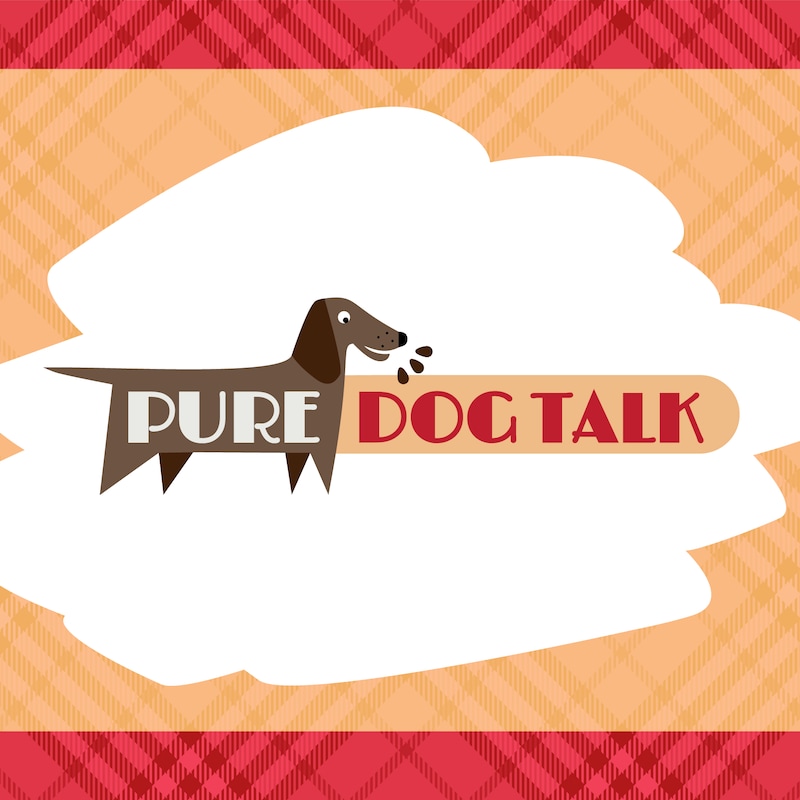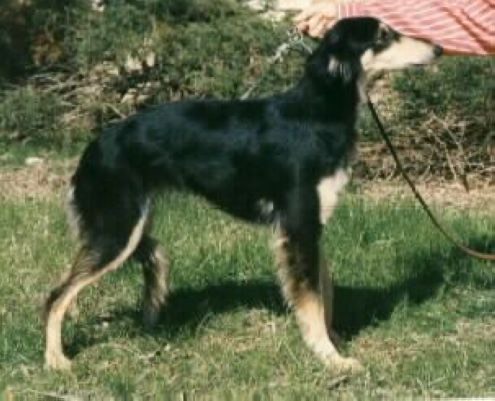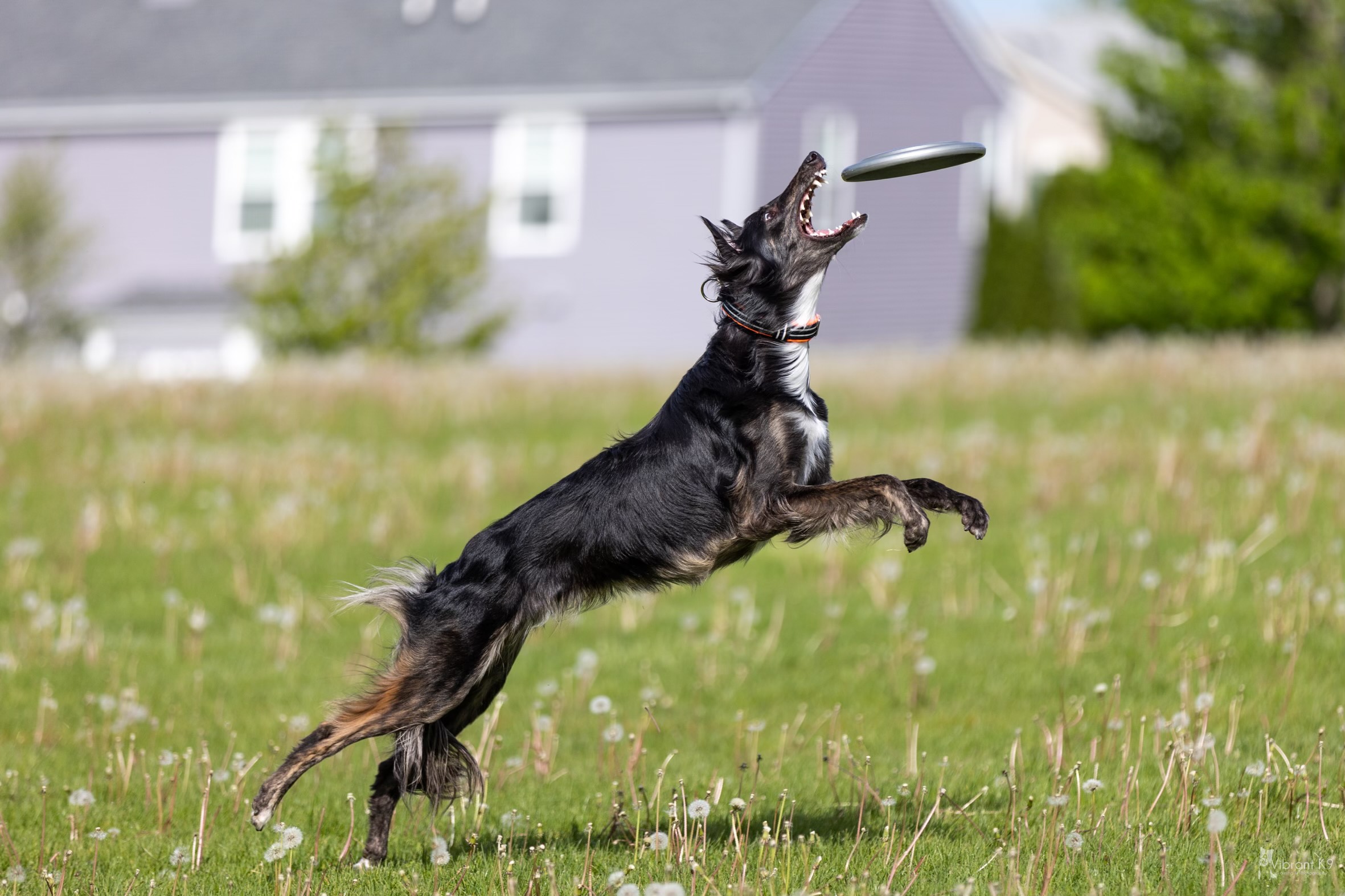
603 — Purebred or Mixed Breed: Silken Windhounds Bridge the Divide
16th October 2023 • Pure Dog Talk • Laura Reeves
Shownotes
Purebred or Mixed Breed: Silken Windhounds Bridge the Divide
[caption id="attachment_12486" align="alignleft" width="358"] Silken Windhounds descend from lurchers (believed to be Whippet x Sheltie) and Borzoi.[/caption] Ashlynn Hill joins host Laura Reeves for a discussion of the Silken Windhound. These dogs appear to bridge the divide between preservation purebred dog breeders and the "fad" mixed breeds that make many preservation breeders tear out their hair. A partial transcript of the conversation follows. Pure Dog Talk is the voice of purebred dogs. We talk to the legends of the sport and give you the tips and tools to create an awesome life with your purebred dog. From showing to preservation breeding, from competitive obedience to field work, from agility to therapy dogs, and all the fun in between, your passion is our purpose. - Welcome to Pure Dog Talk. I am your host, Laura Reeves, and we're having these conversations. We had a conversation last week about the American bullies and kind of this concept that so few of the breeds that we know today were, as I say, burst from the head of Zeus, right? Most of our dogs that we know were created somewhere along the way. Some of them are more recent and there's a conversation to be had about these created crosses, why they were created, what the goals are, what the history and the purpose of the crosses are, and how that progress is going into creating a whole new purebred dog. So I have with me Ashlyn Hill, who is involved in Silken Windhounds. She says she came through the herding breeds to Silken Windhound pipeline, which I think is adorable. Pure Dog Talk is proudly sponsored by Trupanion, medical insurance for the life of your pet. Trupanion can give you peace of mind knowing your pet is covered in the event of an unexpected accident or illness. Even better, Trupanion can pay your veterinarian directly and has no payout limits. So you'll never have to choose between what's best for your pet and what's best for your wallet. And if you're a breeder, you can join Trupanion's free breeder support program and get a special offer to share with your puppy buyers that waves all the waiting periods. So coverage goes into effect immediately.And so welcome Ashlyn. I'm really excited to have this conversation. We've reached episode 600 and we're kicking into the new era with all these spicy conversations. So I'm really excited about doing that. I think there is an interesting and worthwhile conversation to be had.
Thank you so much for having me, Laura. And congratulations on your 600 episodes. I'm very thrilled to be here. This is pretty exciting.
So talk to us about silken windhounds specifically. What is the history of this particular cross? What was the purpose? You know, why was this developed?
 Kristull Amalie - LHW (1984) from Francie Stoll's A litter.[/caption]
Yeah. So Silken Windhounds, we're going back to the very beginning. We're looking at around the 1980s.
Our breed founder is Francie Stoll. She had a pretty extensive history in Borsoy before she decided to take on this project of making a new breed. So in the early 1980s, she actually got the first dogs that she would use to produce Silkens from Walter Wheeler. Walter Wheeler was well known in the Whippet community for having his long -haired Whippets.
So Walter Wheeler claims that he had, you know, purebred long -haired Whippets. You know, whether that is really true, we don't really know. We, as Silken People, we say that they were lurchers. We very strongly believe that there were some Sheltie hiding back there because in Silken, we have CEA and MDR1, herding breed, you know. So that's what our suspicion is. We call them our lurchers.
So Francie got several of these long -haired Whippets from Walter Wheeler. Some of them were in Whelp, and she used those to start making her own thing. I mean, it wasn't until about 1985 that she says her first litter of Silken Windhounds were born.
This was when she had added in some Borzoi and she finally created the vision of what she was looking for. And really what she was looking to produce with these lurchers and adding the Borzoi and the little bit of the whippet history is that she's looking for a medium -sized, very elegant, very easy sighthound. You know, just looking to fill that niche for something a little bit smaller, but not quite Italian greyhound sized. So that was really what she was just looking to produce.
And the D litter, the Kristull D litter, is what she says was her first production of Silkens. She made it. This is what she's looking for. And she took that and continued to breed on from there.
So this is fascinating to me. Is she doing inbreeding, linebreeding, and how is she accomplishing or how is the breed today accomplishing? What is this? 30 years later, the consistency that you expect to see from a purebred dog?
Yes, there was a lot of linebreeding. Mostly there were studs used several times. You know, we're talking upwards of like 7, 8, 9, 10, 11 times. We've got dogs being used. So it was primarily a lot of linebreeding on line breeding in the beginning. But eventually, we were able to create enough diversity to we're sending Silkens out to Europe. We've got Silkens in Canada. We've got other breeders participating. You know, once it kind of got bigger than Francie, that's when, and this is, you know, only the late 90s. That's when we're starting to add more.
We're creating the breed and we're able to take this and really just continue to breed on to what Francie has produced. And I really think that very early on, they were breeding true. You know, you look at a very early picture of a silken windhound and I can look at that even as a project dog and say,
"That looks like a silken."
[caption id="attachment_12484" align="alignleft" width="424"]
Kristull Amalie - LHW (1984) from Francie Stoll's A litter.[/caption]
Yeah. So Silken Windhounds, we're going back to the very beginning. We're looking at around the 1980s.
Our breed founder is Francie Stoll. She had a pretty extensive history in Borsoy before she decided to take on this project of making a new breed. So in the early 1980s, she actually got the first dogs that she would use to produce Silkens from Walter Wheeler. Walter Wheeler was well known in the Whippet community for having his long -haired Whippets.
So Walter Wheeler claims that he had, you know, purebred long -haired Whippets. You know, whether that is really true, we don't really know. We, as Silken People, we say that they were lurchers. We very strongly believe that there were some Sheltie hiding back there because in Silken, we have CEA and MDR1, herding breed, you know. So that's what our suspicion is. We call them our lurchers.
So Francie got several of these long -haired Whippets from Walter Wheeler. Some of them were in Whelp, and she used those to start making her own thing. I mean, it wasn't until about 1985 that she says her first litter of Silken Windhounds were born.
This was when she had added in some Borzoi and she finally created the vision of what she was looking for. And really what she was looking to produce with these lurchers and adding the Borzoi and the little bit of the whippet history is that she's looking for a medium -sized, very elegant, very easy sighthound. You know, just looking to fill that niche for something a little bit smaller, but not quite Italian greyhound sized. So that was really what she was just looking to produce.
And the D litter, the Kristull D litter, is what she says was her first production of Silkens. She made it. This is what she's looking for. And she took that and continued to breed on from there.
So this is fascinating to me. Is she doing inbreeding, linebreeding, and how is she accomplishing or how is the breed today accomplishing? What is this? 30 years later, the consistency that you expect to see from a purebred dog?
Yes, there was a lot of linebreeding. Mostly there were studs used several times. You know, we're talking upwards of like 7, 8, 9, 10, 11 times. We've got dogs being used. So it was primarily a lot of linebreeding on line breeding in the beginning. But eventually, we were able to create enough diversity to we're sending Silkens out to Europe. We've got Silkens in Canada. We've got other breeders participating. You know, once it kind of got bigger than Francie, that's when, and this is, you know, only the late 90s. That's when we're starting to add more.
We're creating the breed and we're able to take this and really just continue to breed on to what Francie has produced. And I really think that very early on, they were breeding true. You know, you look at a very early picture of a silken windhound and I can look at that even as a project dog and say,
"That looks like a silken."
[caption id="attachment_12484" align="alignleft" width="424"] Most Silken Windhound enthusiasts enjoy competing in various sports with their dogs.[/caption]
And so what makes a silken windhound its breed? So the ones that I've seen, I'm kind of like, "Is that an ugly Borzoi? What are we doing?" Right? So talk to me about what makes them their specific breed. What is their breed type?
Yeah. So I think what makes a silken a silken is that size -wise they should be, and typically are, much smaller than a Borzoi. We're talking about with the size slightly bigger than a Whippet, slightly smaller than a Borzoi. They have very long, easy to maintain coat. Personality -wise, they're a little more human -oriented, a little more biddable, willing to work. We do have silken, there's a range. So we have your more sight -hound typical silken where we're talking like, not a lot of repetition, the training session should be short and sweet. And then we also have silken, and I've met several, I have a couple that are just like almost border collie -like, and they're willing this to work, like just drill and drill and drill.
Interesting. So you see that herding bit coming through.
Yes. And it's surprising, you know, how much that really seems to, even still, because Sheltie was only ever what was behind Walter Wheeler's dogs. There has never been any direct cross with Sheltie to Whippet, to Whippet, to Borzoi, like that's never been in the history of a silken windhound. So it's just that little bit way back when, and it still really seems to ring true today.
A little bit goes a long way with those guys.
Yeah. Literally.
So you have a club, you have a parent club, yes?
Yes. We have the International Silken Windhound Society. This was founded in 1999. That is kind of where we started to lock everything in. So we've got the breed club that's been produced. We've accepted a breed standard, and now we're kind of really making things officially official.
And do you compete with your dogs in UKC, I think, yes?
Yes. Yep. So we gained UKC recognition or acceptance in 2011. That's our primary venue for conformation. Some time in the last 10, 15 years.
Yeah. Okay. All right. That's good. And is there a desire amongst your group of fanciers to compete at the AKC level? Is this something you expect to take forward and to FSS, miscellaneous, and work your way up?
Yes. Yes. Very much much so. I would say a very good chunk of exhibitors in the breed are hoping for AKC acceptance.
Listen in for the rest of this fascinating coversation....
Most Silken Windhound enthusiasts enjoy competing in various sports with their dogs.[/caption]
And so what makes a silken windhound its breed? So the ones that I've seen, I'm kind of like, "Is that an ugly Borzoi? What are we doing?" Right? So talk to me about what makes them their specific breed. What is their breed type?
Yeah. So I think what makes a silken a silken is that size -wise they should be, and typically are, much smaller than a Borzoi. We're talking about with the size slightly bigger than a Whippet, slightly smaller than a Borzoi. They have very long, easy to maintain coat. Personality -wise, they're a little more human -oriented, a little more biddable, willing to work. We do have silken, there's a range. So we have your more sight -hound typical silken where we're talking like, not a lot of repetition, the training session should be short and sweet. And then we also have silken, and I've met several, I have a couple that are just like almost border collie -like, and they're willing this to work, like just drill and drill and drill.
Interesting. So you see that herding bit coming through.
Yes. And it's surprising, you know, how much that really seems to, even still, because Sheltie was only ever what was behind Walter Wheeler's dogs. There has never been any direct cross with Sheltie to Whippet, to Whippet, to Borzoi, like that's never been in the history of a silken windhound. So it's just that little bit way back when, and it still really seems to ring true today.
A little bit goes a long way with those guys.
Yeah. Literally.
So you have a club, you have a parent club, yes?
Yes. We have the International Silken Windhound Society. This was founded in 1999. That is kind of where we started to lock everything in. So we've got the breed club that's been produced. We've accepted a breed standard, and now we're kind of really making things officially official.
And do you compete with your dogs in UKC, I think, yes?
Yes. Yep. So we gained UKC recognition or acceptance in 2011. That's our primary venue for conformation. Some time in the last 10, 15 years.
Yeah. Okay. All right. That's good. And is there a desire amongst your group of fanciers to compete at the AKC level? Is this something you expect to take forward and to FSS, miscellaneous, and work your way up?
Yes. Yes. Very much much so. I would say a very good chunk of exhibitors in the breed are hoping for AKC acceptance.
Listen in for the rest of this fascinating coversation....


